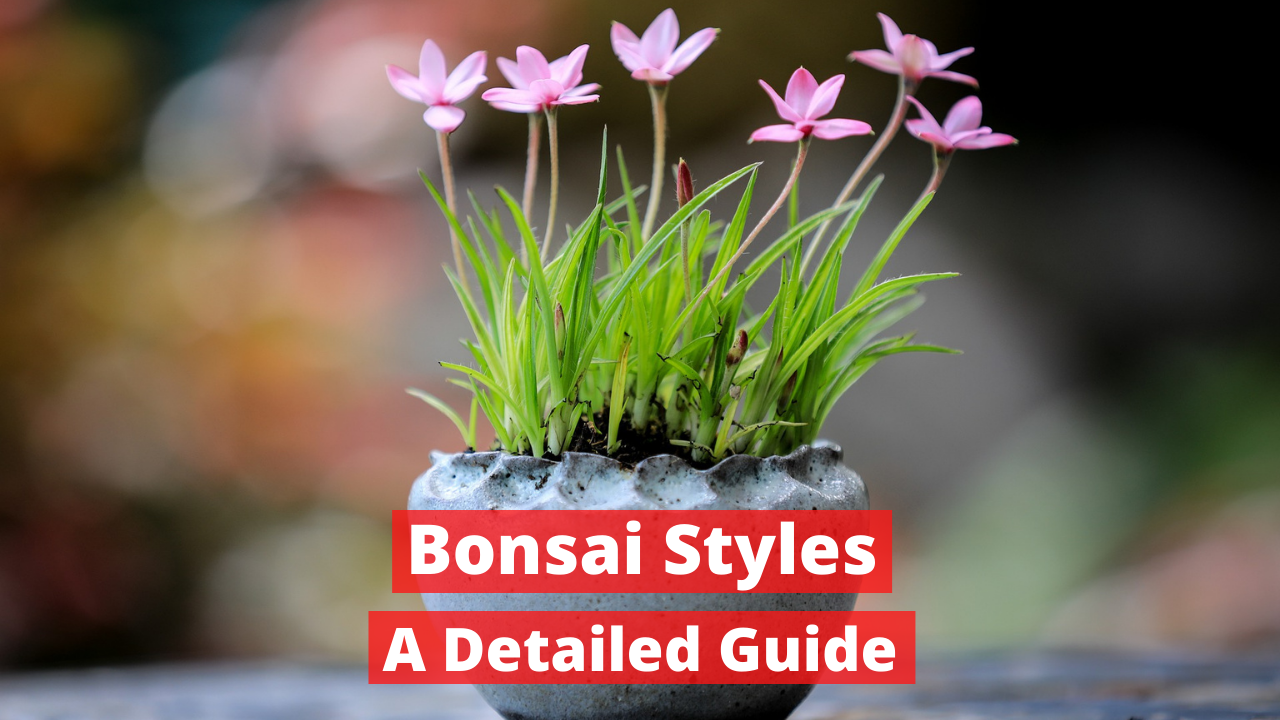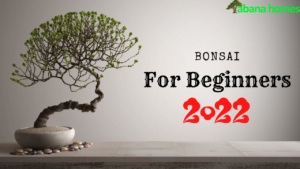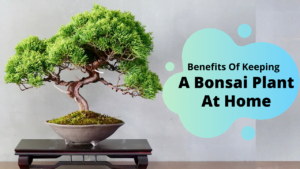One of the unique elements of owning a bonsai tree is styling it. A bonsai style and training are intricate works of art that require careful consideration of many elements. Bonsai tree styles do not have to conform to any shape because these styles are subject to personal interpretation and originality.
Nonetheless, the bonsai styles guide is useful for understanding shapes and should be used as recommendations while training small trees. After you’ve settled on the species and design of your Bonsai, you’ll need to think about the habitat it’ll be in.
Before that, get to know the basic concept of the bonsai style. What matters the most and what should be considered?
Bonsai online: Bonsai online is a great resource for bonsai enthusiasts. You can find information on bonsai trees, bonsai plants, and bonsai care. There are also online forums where you can connect with other bonsai enthusiasts and share your knowledge and experiences. You can also find online stores that offer a wide variety of bonsai products, including tools and accessories.
Basic Concepts of Bonsai Styles
The first step in shaping a bonsai style guide is determining which style is most suited to the tree’s inherent design and arrangement.
The following are some of the primary bonsai styles guide classifications:
Orienting the trunk: A series of styles describe the orientation of the main trunk of a bonsai tree. A tree with its apex straight over the center of the trunk’s entry, or barely to the side of that center, or deeply bent to one side, and some leaned below the point at which the bonsai trunk entered the soil.
The surface of the trunk and bark: The trunk shape and bark finish are described in a variety of styles. A bonsai style with a twisted trunk, for example, is nebikan, whereas one with a vertical split or hollows is sabakan. Trees with noticeable dead limbs or trunk scarring are classified as deadwood bonsai style.
The placement of the trunk and roots: Although most bonsai trees are planted in the ground, some styles describe trees placed on the rock.
Several trunks: While most bonsai-style trees have only one trunk, well-defined style categories for those with multiple trunks, a bonsai can be characterized solely by the number of trunks within these types. Specific trunk styles, such as raft and sinuous styles for multiple trees growing from a linked root, and multiple unconnected trees in huge numbers, can also be used to characterize the trunk configuration.
Before covering the different bonsai tree styles, let us discuss the purpose. What makes it unique?
What is the purpose of Bonsai Style?
The style system serves various functions, some practical and others artistic. Styles are a shorthand descriptor for bonsai specimens in their most basic and popular application. The short style phrase appears in catalog descriptions, usually alongside a species identifier, and characterizes the Bonsai.
Even if the styles are only used as descriptive names, the system streamlines bonsai teaching and learning while also providing generally understood phrases for public communication about Bonsai.
Predefined designs can also help the designer plan the growth of a pre-bonsai tree. Specific traits in the untrained specimen may imply or rule out certain styles.
Some tree species aren’t appropriate for certain styles. To identify which branches to delete or alter, the designer can compare the pre-bonsai specimen to a library of acceptable styles.
Although the styles can help a bonsai designer, they aren’t entirely prescriptive. The Bonsai’s species, age when it began bonsai training, the tree’s pre-existing shape and structure, and even the bonsai style artist’s training and preferences all significantly impact the shape of the finished Bonsai.
Let’s discuss and understand the different bonsai styles guide.
Bonsai Style
There are various bonsai styles out here. We have picked out the best 14 styles for you.
1. Formal Upright (Chokkan)
One of the most popular bonsai style shapes is the Chokkan, or formal upright type. A bonsai tree with this style has a conical, sometimes spherical shape. The Formal upright bonsai trees are thick, long branches and straight, upright trunks. Strong surface roots should be evident, extending uniformly around the trunk and moving down into the soil from the tree’s base.
They are quick to shape, don’t require advanced pruning techniques, and are convenient for beginners.
The suitable types for bonsai tree styles are:
- Juniper
- Pine
- Spruce
- Maple
2. Informal Upright (Moyogi)
This design is based on the shape of a tree that has developed in harsh conditions in nature. Its trunk does not have a straight line. It will have an “S” shaped trunk to demonstrate contortion. The trees’ tips are straight above the base, yet their trunks are twisted somewhat. Because of the curved form of the trunk, the plants maintain a very natural appearance. The branches get smaller as they get closer to the top, and they grow along the curves’ edges as well.
The suitable types for bonsai tree styles are:
- Japanese Maple
- White Pine
- Crab Apple
- Trident Maple
- Juniper
- Beech
- Pomegranate
3. Slanting (Shakan)
A tree will lean in one way due to the wind blowing in one dominant direction or as a result of growing in the darkness and having to bend toward the sun. On one side, the roots are highly developed to keep the tree standing. The roots on the side of the leaning tree are not developed. To generate a sense of visual balance, the initial branch grows in the opposite direction of the tree. The trunk might be slightly curved or entirely straight, but the bottom must be thicker than the top.
The suitable types for bonsai tree styles are:
- Juniper
- Japanese White Pine
- Japanese Cedar
- Crab Apple
- Beech
- Trident Maple
- Any Coniferous Tree
4. Cascade Bonsai Style (Kengai)
In the cascade style, the trunk grows upward from the soil, quickly turns downward, and reaches a position below the pot’s bottom edge. As a result, the pot should be set on the table’s edge or a bit of a stand. The majority of the foliage in the cascade type is below the soil level.
The suitable types for bonsai tree styles are:
- Chinese Juniper
- Japanese White Pine
- Mountain Pine
- Scotch Pine
- Any Ficus Tree
- Any Coniferous Tree
5. Semi Cascade Bonsai Style (Han-kengai)
The semi-cascade style features a tree trunk that grows straight before cascading down at a less abrupt inclination than the cascade style. Unlike tree trunks in the cascade style, the semi-cascade style has a curved trunk that does not reach the bottom of the container. The front of the tree is thought to be the cascading branches, while the back branches come closer to the trunk than in other types.
The suitable types for bonsai tree styles are:
- Chinese Juniper
- Japanese White Pine
- Mountain Pine
- Scotch Pine
- Willows
- Chrysanthemums
- Wisteria
- Star Jasmine
- Any Ficus Tree
- Any Coniferous Tree
6. Literati Bonsai Style (Bunjingi)
The Bunjingi, or literati style, displays congested trees and fighting for resources with other trees. This design has a narrow trunk and few branches. Although this tree may appear odd to some, it is considered one of the more challenging styles to master.
The literati bonsai tree has a crooked upward-moving trunk.
The suitable types for bonsai tree styles are:
- Red Pine
- White Pine
- Japanese Plum Tree
7. Windswept Bonsai Style (Fukinagashi)
The windy aesthetic also shows trees that must fight for survival. It resembles the tree blown in one way by the wind. The branches and trunk had grown to one side. The branches shoot out on all sides of the trunk, yet they all bend to one side eventually. This type of tree grows naturally along the coast and in the mountains.
The suitable types for bonsai tree styles are:
- Chinese Juniper
- Japanese White Pine
- Mountain Pine
- Scotch Pine
- Red Pine
- Japanese Plum Tree
8. Double Trunk Style Bonsai (Sokan)
Two tree trunks arise from a single root system in the double trunk style. The meeting point of the two trunks must have a sharp “V” form rather than a “U” shape. The bigger the spacing between the trunks, the higher the tree. The thickness and length of the two trunks will differ; the thicker and more developed trunk will grow nearly erect, while the smaller trunk will come out tilted. A single crown of leaves/canopy will be produced by both trunks.
The suitable types for bonsai tree styles are:
- Japanese Beech
- Japanese Maple
9. Multitrunk Bonsai Style (Kabudachi)
In theory, the multi-trunk style is similar to the double trunk design but with three or more trunks. A single root system connects all trunks, and the tree is genuinely one. The thickest and most developed trunk creates the top of the crown of leaves.
The suitable types for bonsai tree styles are:
- Japanese Beech
- Japanese Maple
10. Forest Bonsai Style (Yose-ue)
The Yose-ue style, also known as the forest style, is quite similar to the multi-trunk style. The forest style comprises several trees, but the multi-trunk style is made up of only one tree with many branches. Because the trees are arranged in a staggered fashion, the style is meant to resemble a natural forest. The thickness and height of each tree vary.
For a more realistic effect, the trees are spaced at varied distances. “Group Style” is the term for it. This method entails cultivating multiple bonsai styles guide trees in a single container.
The suitable types for bonsai tree styles are:
- Japanese Beech
- Japanese Maple
11. Raft Bonsai Style (Ikadabuki)
The raft style, also known as the Ikadabuki, is a unique bonsai form in which branches develop from a damaged tree. The raft style is inspired by a storm-damaged or wind-damaged tree in nature. The fallen trunk eventually develops new roots, and the branches grow upwards.
A new tree grows and remains attached to the fallen trunk over time. The old root system can give enough nutrition for the branches to survive. These new trunks help to create a single canopy.
The suitable types for bonsai tree styles are:
- Japanese White Pine
12. Growing on a Rock Bonsai Style (Seki-joju)
On rocky terrain, trees are forced to use their roots for hunting nutrient-rich soil, which is commonly found in cracks and holes. Because the roots are exposed before reaching the earth, they must defend themselves from the sun by growing a unique bark around them. The roots of a Bonsai tree grow over a rock into the pot. Caring for this tree is similar to caring for any other style.
The suitable types for bonsai tree styles are:
13. Growing in a Rock Bonsai Style (Ishisuki)
The tree’s roots grow in the cracks and holes of the rock in this style. It means that the roots don’t have much room to grow and absorb nutrition. Trees growing on rocks will never appear to be in good health; thus, it should be evident that the tree is fighting for survival. Because there is a limited area to store water and nutrients, it is critical to fertilize and water frequently. The Bonsai’s rock is frequently placed in a small pot, sometimes filled with water or fine gravel.
14. Hokidachi Style Bonsai (Broom)
The trunk of a broom has to be straight and upright, and it should ideally taper towards the branches. Like a Japanese fan, the branches all point outwards. Any tree with slender branches will benefit from the Hokidachi style. The leaf and branches of the tree stretch outwards in all directions at the top of the tree, rather than growing progressively shorter as they approach the pinnacle. The leaves and branches combine to give a rounded, crown-like look.
This form of the tree is usually the strongest and boldest in a group in nature. Their outward spreading branches are uninformed because they are tall and don’t have to fight for sunlight.
The suitable types for bonsai tree styles are:
- Most Elms (Chinese Elm, Siberian Elm, English Elm)
- Beech
- Olive
- Cherry
Conclusion
Designing and training bonsai tree styles are intricate artwork, evidenced by these 14 number styles, and you must consider various variables. After you’ve settled on the species and Bonsai style, you’ll need to think about the growing and caring guide of bonsai trees (light, temperature, water, humidity, pruning, soil, and more).
Related Articles
- Bonsai for Beginners in India [Update 2024]
- 15 Best Plants for Front Door Entrance India | Auspicious plants for front door
- 10 Study Table Decoration Ideas That Will Make You Love Learning
- Revive Your Bonsai Tree with These Proven Techniques!
- Top 15 Benefits of Bonsai Plants that will Make your Life Awesome
- Top 10 Indoor Plants for Cafes to Enhance Decor & Comfort







